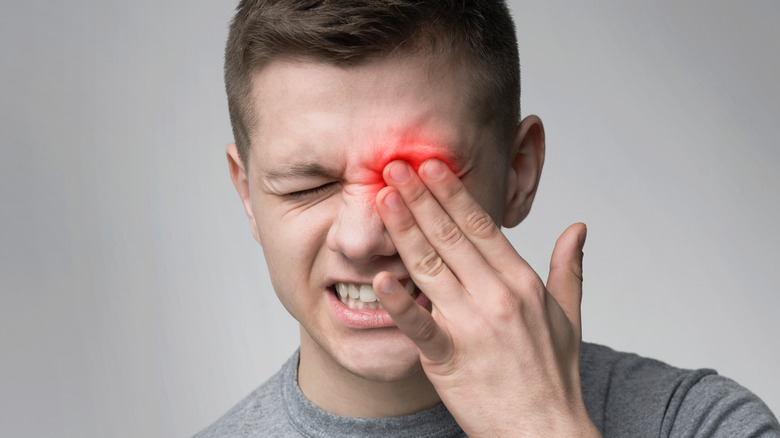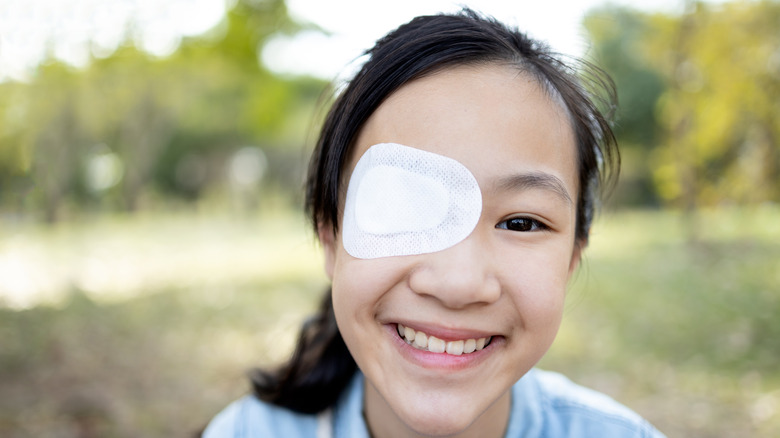Are Styes Contagious?
One morning you wake up and the first thing you feel is a pain in someplace you wouldn't expect: your eyelid. One look in the mirror confirms the culprit. Your eyelid is red and swollen with a stye, likely caused by an infected lash follicle or a blockage of the oil ducts in your eyelid (via the Cleveland Clinic).
You might be embarrassed by the swollen lump on the edge of your lid, but you shouldn't be. The Cleveland Clinic says that they're very common, more so in adults than children, as the oil from an adult's eyelid is thicker and more likely to create a blockage. Most styes only last a week or two but it's an uncomfortable healing process. Not only do styes cause swelling and redness but they can cause itching, light sensitivity, and soreness as well as tears and a buildup of crust along the lid.
The Mayo Clinic suggests gentle home treatments like a warm, damp compress for five to ten minutes several times throughout the day and gentle eyelid massages. If the swelling extends along the whole lid or into the face or does not improve at all, the Mayo Clinic urges you to see a doctor. But if you start to see improvement, it's likely to clear up on its own as the Cleveland Clinic said. The question then becomes, can you spread your stye to others?
It's unlikely a stye is contagious but not impossible
You might think that passing a stye from one person to another is impossible, at least without close contact. But, as the Cleveland Clinic outlines, that's not entirely true. The clinic says that adults can work and children can attend school when they have a stye, but certain precautions must be taken.
Styes generally aren't contagious according to Cleveland Clinic, but if they are caused by a bacterial infection, it is possible to spread that bacteria through touch. The Clinic states that it is important to wash your hands before and after touching a stye as a means of preventing bacterial transfer. It is also a good idea to wash the affected person's pillowcase frequently. Finally, unless you're applying treatment, the Clinic urges people to keep their hands away from their styes as another measure against bacterial spread.
You might be tempted to squeeze a stye as you would a pimple, but the Cleveland Clinic warns against that as well. They also recommend skipping the makeup while your stye heals and generally leaving your eyelid alone, aside from treatment, until the stye is gone.
Styes are painful and, despite the relatively short healing period, may feel interminable. But they are treatable. And, so long as you wash your hands after touching it and do what you can to prevent bacterial spread, they generally aren't something you can share with others.


